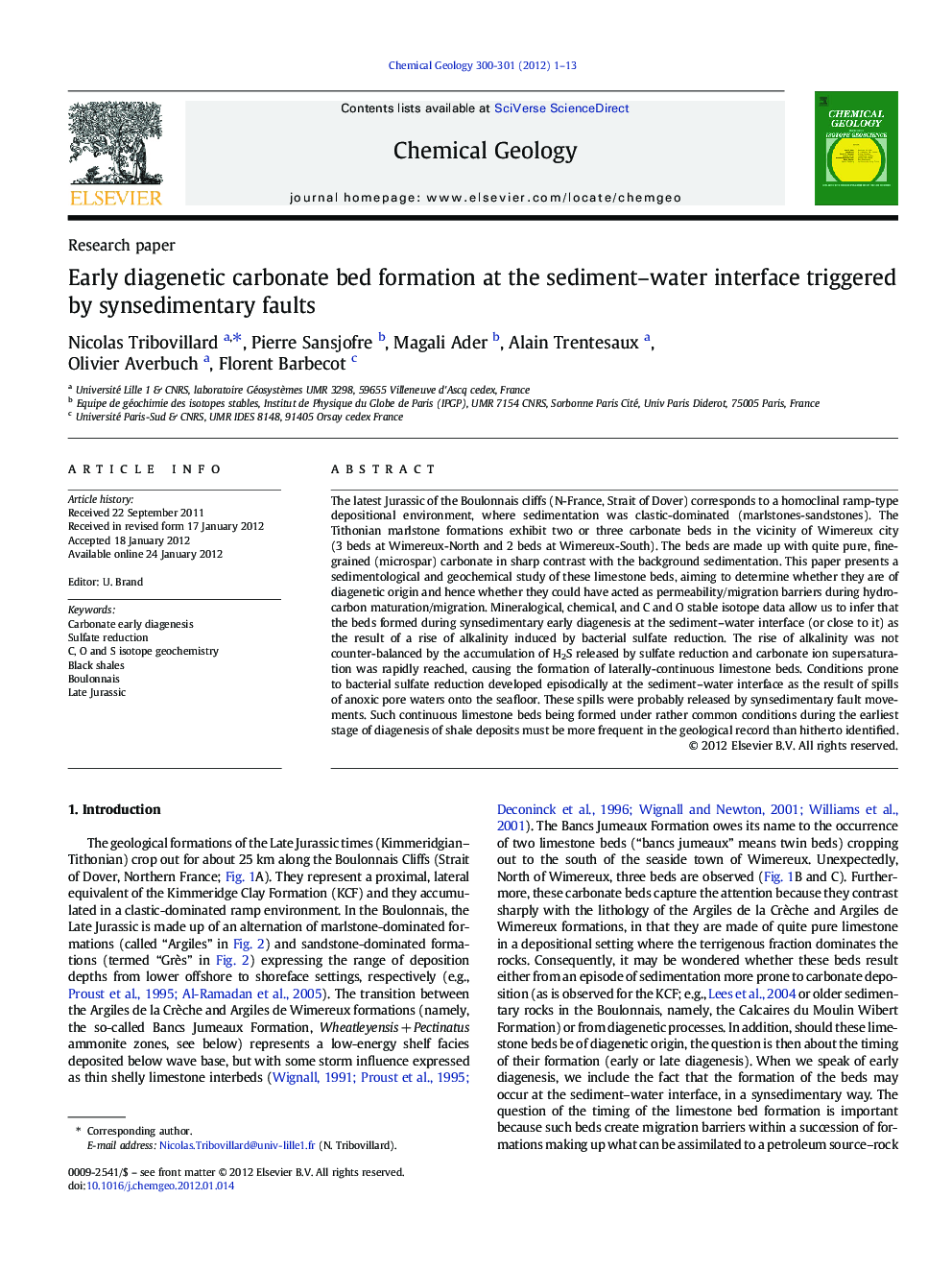| کد مقاله | کد نشریه | سال انتشار | مقاله انگلیسی | نسخه تمام متن |
|---|---|---|---|---|
| 4699475 | 1637650 | 2012 | 13 صفحه PDF | دانلود رایگان |

The latest Jurassic of the Boulonnais cliffs (N-France, Strait of Dover) corresponds to a homoclinal ramp-type depositional environment, where sedimentation was clastic-dominated (marlstones-sandstones). The Tithonian marlstone formations exhibit two or three carbonate beds in the vicinity of Wimereux city (3 beds at Wimereux-North and 2 beds at Wimereux-South). The beds are made up with quite pure, fine-grained (microspar) carbonate in sharp contrast with the background sedimentation. This paper presents a sedimentological and geochemical study of these limestone beds, aiming to determine whether they are of diagenetic origin and hence whether they could have acted as permeability/migration barriers during hydrocarbon maturation/migration. Mineralogical, chemical, and C and O stable isotope data allow us to infer that the beds formed during synsedimentary early diagenesis at the sediment–water interface (or close to it) as the result of a rise of alkalinity induced by bacterial sulfate reduction. The rise of alkalinity was not counter-balanced by the accumulation of H2S released by sulfate reduction and carbonate ion supersaturation was rapidly reached, causing the formation of laterally-continuous limestone beds. Conditions prone to bacterial sulfate reduction developed episodically at the sediment–water interface as the result of spills of anoxic pore waters onto the seafloor. These spills were probably released by synsedimentary fault movements. Such continuous limestone beds being formed under rather common conditions during the earliest stage of diagenesis of shale deposits must be more frequent in the geological record than hitherto identified.
► Diagenetic limestone beds can form directly at the sediment–water interface through bacterial sulfate reduction.
► They cannot be distinguished from sedimentary limestone beds without the help of C and O isotope data.
► Sulfate reduction was induced by spills of anoxic waters on the sea floor released by synsedimentary fault movements.
Journal: Chemical Geology - Volumes 300–301, 18 March 2012, Pages 1–13